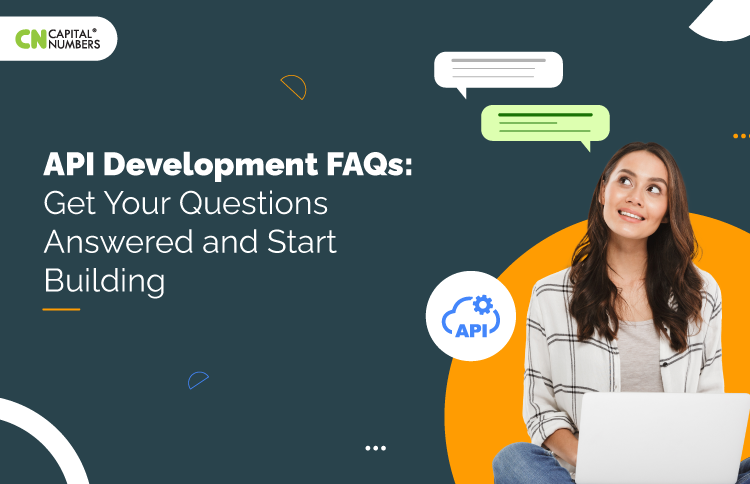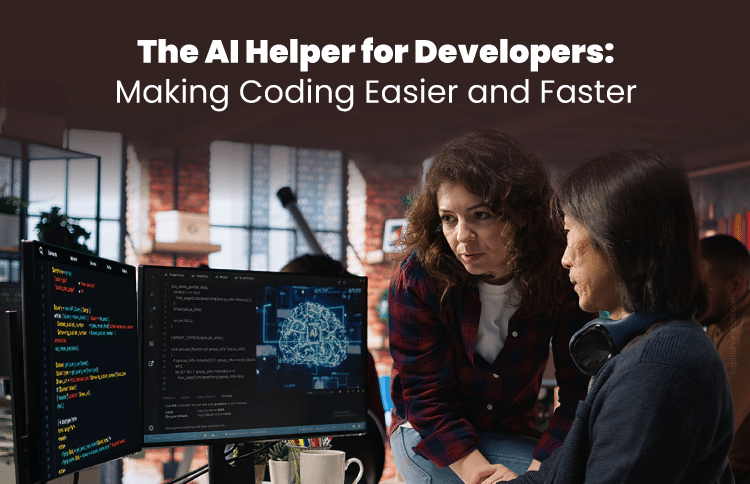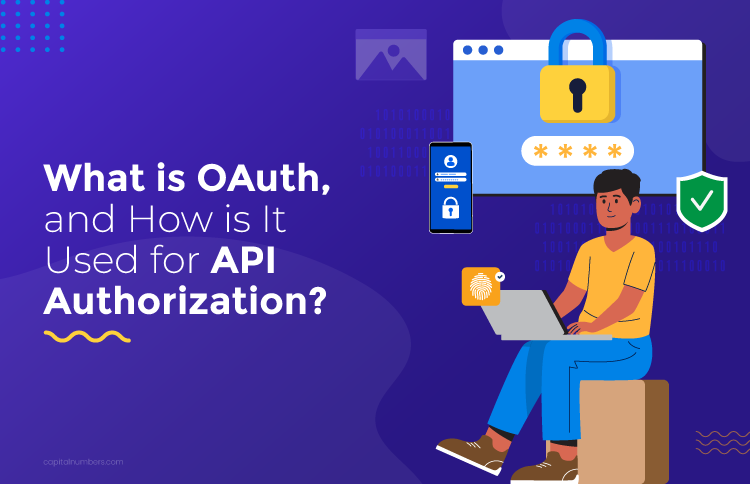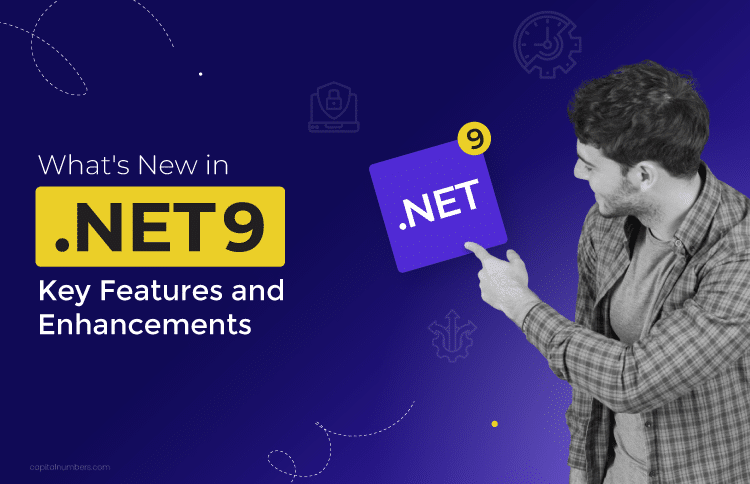API Development FAQs: Get Your Questions Answered and Start Building
Table of Contents
In today’s digital world, Application Programming Interfaces, or APIs, are the hidden heroes that let different software apps talk to each other smoothly. Think of APIs as the secret handshake that allows your favorite apps to work together seamlessly, from checking the weather on your phone to making a payment online.
This blog is here to clear up any questions you might have about creating APIs. We’ve gathered the most common questions about API development and are ready to give you the answers you need to start building your own.
Understanding API Development
What is API Development?
API development is like setting up a common language for different software programs to talk to each other. Imagine you’re creating a list of commands or a guidebook that lets one program ask another for information or do a task without knowing all the technical details of how that other program works.
There are several types of APIs, each with its use case. RESTful APIs are popular because they use simple HTTP requests (like those used in web browsing) to communicate, making them ideal for internet-based services. SOAP APIs are more formal and secure and are often used by businesses for internal applications. Then there’s GraphQL, a newer type that lets users get the data they need from a large system, making things faster and more efficient.
What Are the Benefits of API Development?
APIs are incredibly useful because they allow programs to share functions and data, helping businesses do more with what they already have. They can link different systems smoothly, add new features to existing platforms, and connect with external services without a hitch.
Take a retail website, for example. By using APIs, it can easily process payments through a third-party service, making shopping seamless for customers. Or consider a health tech app that tracks fitness. Through APIs, it can collect data from various fitness devices, giving users a comprehensive view of their health.
These scenarios show how APIs let businesses enhance their offerings and provide better services to their users. Moreover, by opening up their systems with APIs, companies can invite outside developers to build new tools or services that work with theirs. This adds value to their original platform and encourages innovation and growth in exciting new ways.
Frequently Asked Questions about API Development
Who Needs API Development Services?
API development services are for anyone who wants their software applications to communicate with other apps or services efficiently. This includes businesses that aim to integrate third-party services, developers looking to build multi-platform applications, and companies seeking to enhance their existing digital infrastructure. Whether you’re a startup aiming to launch a new app or a large enterprise looking to streamline your operations, understanding and utilizing APIs is crucial.
What Are the Different Stages of API Development?
The API development process involves several key stages. First comes planning and design. In this stage, you outline what your API will do and how it will do it. Next is development, where you write the actual code for the API. After development comes testing. This ensures everything works as expected and is secure. Then, there’s deployment. In this stage, your API is made available for use. Finally, maintenance is ongoing. You need to update and improve the API over time.
How Much Does API Development Cost?
The cost of API development varies widely depending on the complexity of the API, the technologies used, and the scale of the project. Simple APIs might cost only a few hundred dollars, while more complex integrations can run into the thousands or more. It’s important to clearly define your requirements and budget before starting the development process.
What Programming Languages Are Used for API Development?
APIs can be developed using a variety of programming languages. Some use Java and leverage “middleware” such as JBoss and 3scale for assistance, whereas others may be crafted in Python with frameworks like Flask, Django, or Pyramid. Additionally, APIs are developed in Ruby, Perl, Lua, C, C++, .NET, and virtually any other programming language imaginable. The choice of language often depends on the project’s specific requirements, the expertise of the development team, and the environment in which the API will operate.
What Are the Key Challenges in API Development?
Some common challenges in API development include ensuring the API’s security against unauthorized access or attacks. It’s also crucial to ensure it can handle a large number of requests without performance issues. Additionally, the API must be scalable. Maintaining backward compatibility for users as the API evolves can also present challenges.
How Do I Choose the Right API Development Company?
When selecting an API development company, look for expertise in your required technologies and a strong portfolio of successful projects. Consider their approach to security and scalability and their ability to understand and meet your business needs. Communication and collaboration are also key factors to ensure a smooth development process.
You may also read: How to Choose the Right API Development Company
What Are the Essential Tools and Resources for API Development?
There are numerous tools and platforms available to aid in API development, testing, and documentation. Some popular ones include Postman for testing, Swagger for documentation, and GitHub for version control. Choosing the right set of tools can streamline the development process, enhance collaboration among team members, and improve the overall quality of the API.
What is REST API?
REST, or Representational State Transfer, is a set of guidelines for creating web services that allow interaction with web resources. A REST API is designed to use standard HTTP methods like GET, POST, PUT, and DELETE for communication. It’s favored for its simplicity, scalability, and compatibility with web technologies, making it ideal for web-based applications.
What’s SOAP?
SOAP, or Simple Object Access Protocol, is a protocol for exchanging structured information in web services. It relies on XML (Extensible Markup Language) for message format and usually HTTP or SMTP for message negotiation and transmission. SOAP is known for its high security, strict standards, and support for complex operations, making it suitable for enterprise-level applications.
What’s the Difference Between SOAP and REST?
The key differences between SOAP and REST lie in their approach and use cases. SOAP is protocol-based, more standardized, and security-focused, making it ideal for enterprise and financial services. REST is an architectural style that uses standard HTTP methods, making it more flexible and easier to integrate with web technologies, perfect for public APIs and web services.
What’s GraphQL?
GraphQL is a query language for APIs and a runtime for executing those queries using a type system you define for your data. Unlike the more traditional REST API, GraphQL allows clients to request the needed data, making it possible to fetch data from multiple sources with a single query. This reduces the amount of data transferred over the network and improves the efficiency of data retrieval.
One of the key benefits of GraphQL is its ability to aggregate data from multiple sources, including databases, microservices, and third-party APIs, into a single API call. This can simplify frontend development, as developers no longer need to make separate calls to different endpoints for the needed data.
Overall, GraphQL offers a more efficient, powerful, and flexible approach to API design and development, especially in complex systems and applications where data requirements are varied and dynamic.
You may also read: Next Generation of API Development: Transitioning from REST to GraphQL and gRPC
How Are APIs Tested?
API testing involves sending calls to the API, getting output, and noting the system’s response. Tests include:
- Verifying that the API returns the correct response as expected.
- Handling errors correctly when inputs are unexpected or incorrect.
- Ensuring performance meets the requirements.
Tools like Postman, SoapUI, and automated testing frameworks are commonly used for API testing.
What Are the Differences Between the POST and PUT Methods?
The primary difference between POST and PUT methods is how they handle resource creation and updates. POST is used to create a new resource on the server. If you POST the same request multiple times, it will create multiple resources. On the other hand, PUT is used to update an existing resource or create a new one if it doesn’t exist. Unlike POST, sending the same PUT request multiple times will only create or update one resource, making PUT idempotent.
Getting Started with API Development
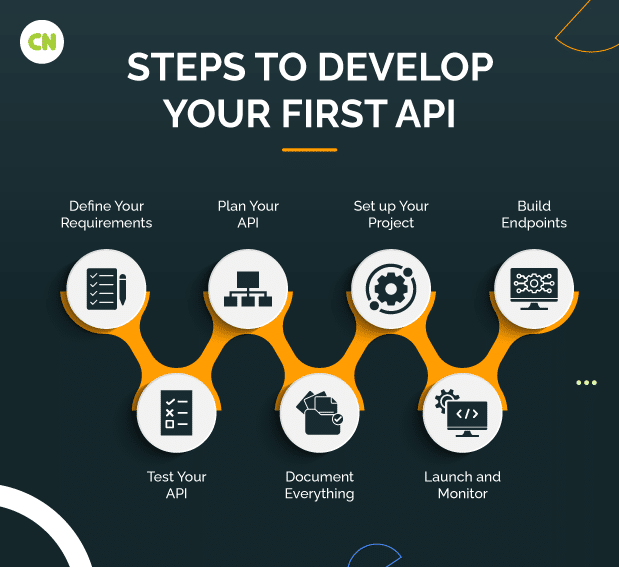
If you’re new to making APIs, don’t worry! Let’s walk through the basic steps to create a simple one. It’s all about planning, building, and making sure it works.
1. Figure out What You Need: Think about what you want your API to do. What information or services will it give access to? Knowing this helps you focus on building exactly what you need.
2. Pick Your Tools: Next, decide on the programming language and any tools or frameworks that will help you build your API. The right tools make the job easier.
3. Plan Your API: Sketch out what requests (or “calls”) your API will respond to, like getting user data or updating a record. Think about what each request needs and what it should give back.
4. Set up Your Project: Now, it’s time to start coding. Set up your project with the chosen language and tools. Create the basic structure where you’ll add your API code.
5. Build Endpoints: Endpoints are the specific spots where your API can be accessed. Start coding them based on your plan. Each endpoint should match a specific request and provide the right response.
6. Test Your API: Testing is crucial. Use tools or write scripts to send requests to your API and see how it responds. Make sure it does what you expect and handles mistakes gracefully.
7. Document Everything: Write down how your API works, what each endpoint does, and how to use them. Good documentation helps others understand and use your API without confusion.
8. Launch and Monitor: Once everything’s working and well-documented, you’re ready to launch. After your API is out there, keep an eye on it for any issues and be ready to fix bugs or make improvements.
Building your first API might seem like a big task, but taking it step by step makes it manageable. Before you know it, you’ll have a working API ready for others to use!
Final Thoughts
In this blog, we’ve gone through everything you need to know about API development, from the basics to more advanced topics like REST APIs, SOAP, and GraphQL. We aimed to make API development easy to understand, covering how important it is for apps to talk to each other, share data, and work better together. We’ve also outlined the initial steps for launching your API projects, emphasizing the importance of selecting the right tools for the job. Additionally, we discussed the significance of choosing the right partners to collaborate with, ensuring your project’s success.
As technology moves forward, so will API development. Staying up-to-date, flexible, and focused on creating value is essential. We hope you’ve found this blog helpful for learning more about APIs and feel encouraged to dive deeper into this exciting area.

